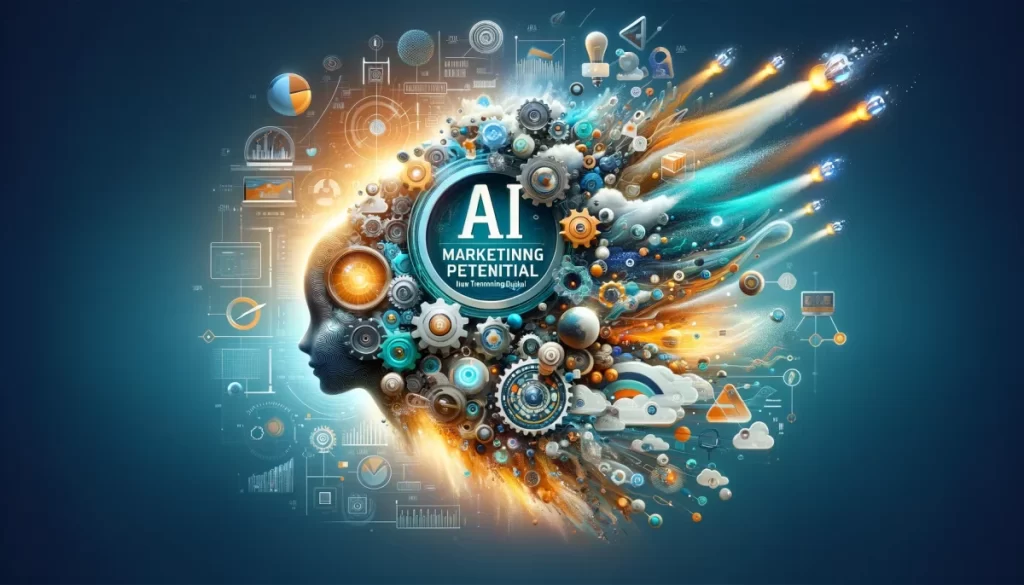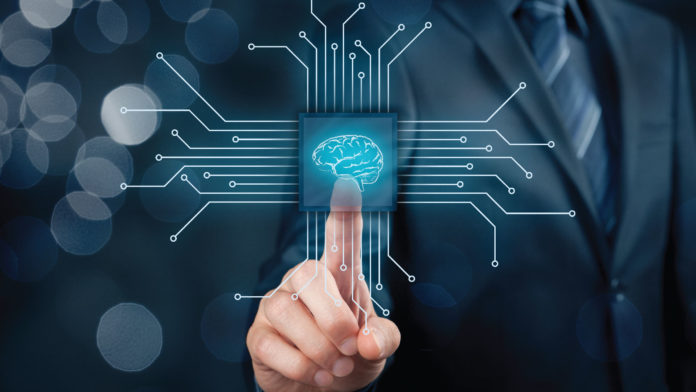In an era where artificial intelligence (AI) is rapidly transforming industries, marketing is no exception. As AI steps beyond optimization and automation, it brings a wealth of creative potential to the field.
Yet, this brave new world of AI-driven marketing comes with its set of challenges and risks. Join us as we explore how AI can ignite creativity, redefine marketing roles, manage automated marketing risks, and give rise to an evolved breed of marketing technologists. This journey will reveal how savvy brands can harness the power of AI, while preserving the irreplaceable human touch.
The Creative Potential of AI in Marketing
As AI continues to evolve, it offers marketers a dynamic ally in creating engaging and personalized ad experiences. With the advent of generative creative tools, emotive targeting, and conversational marketing, AI is set to redefine the limits of captivating consumer attention and imagination.
However, while AI offers untapped potential, it doesn’t eliminate the need for human creativity and strategy. Like any tool, its value lies in how marketers use it. The brands that will flourish with AI are those that prioritize human needs and emotions, using technology to amplify relevance and resonance.

AI offers opportunities for both scalability and specificity. Generative algorithms can quickly churn out a multitude of unique ad variants, featuring a range of visuals, copy, and layouts. On the other hand, emotive AI can analyze facial expressions and vocal tones to comprehend audience sentiment and craft messages meticulously tailored to those states.
When used wisely, systems like these can ignite creativity rather than stifle it. Just as the camera expanded the painter’s canvas, AI can extend the limits of what marketing teams can conceive and execute. The human touch remains crucial in providing creative direction and purpose.
The brands that will prosper in an AI-powered future will remember that technology serves strategy and connections with real people. Keep that human focus, and AI might unleash creativity we cannot yet imagine.
Managing the Risks of Automated Marketing
As the world of marketing becomes increasingly automated through artificial intelligence, it’s crucial to thoughtfully address key issues such as privacy, security, bias, and the impact on jobs. AI-powered tools offer the allure of enhanced efficiency and personalization, but they also carry risks if not handled with care. Brands that responsibly manage their AI systems can reap the benefits while fostering customer trust.

Artificial Intelligence Influencing the Marketing Outcomes and Transforming the Marketing Function
One of the top priorities in automated marketing is the protection of user privacy, as data is the fuel that drives it. Brands should conduct thorough audits of their data collection practices, minimize unnecessary data capture, respect user deletion rights, and enforce strict access controls. Any data used by AI systems should be in line with stated privacy policies. Moreover, brands can adopt privacy-preserving innovations like federated on-device learning, which keeps user data localized.
Along with privacy, security is another critical aspect that brands must prioritize when applying AI, to protect systems and data from breaches. As bots interact directly with customers, measures such as vulnerability testing, anomaly detection, penetration testing, and other proactive steps are essential. Cybersecurity awareness training can help marketing teams understand and mitigate risks.
Algorithmic bias is another significant concern that can arise in AI systems, leading to issues like exclusion or problematic messaging that can harm a brand’s reputation. Responsible AI governance, diverse data inputs, bias testing, and oversight groups can help brands identify and address issues early, ensuring fair representation. Teams should continuously review the outputs of automated marketing.
While AI offers the promise of more efficient marketing operations, the impact on the workforce also needs to be considered. Brands should adopt a collaborative approach, using AI to augment teams rather than replace roles. Through reskilling programs, staff can complement automated tools with their irreplaceable emotional intelligence and creativity. Brands should be transparent about their automation plans and provide support for displaced workers.
By addressing these critical issues, marketing teams can harness the personalized potential of AI while building essential trust. Technical solutions, when paired with ethical governance, diverse review, and responsible reskilling, enable brands to automate marketing judiciously, rather than risk damaging hard-won customer relationships through carelessness. The future doesn’t have to be a choice between efficiency and ethics. Responsible adoption allows everyone to thrive.
When Machines Get Imaginative: AI’s Foray into the Creative Director’s Sphere

Artificial intelligence is no longer confined to optimizing and automating mundane marketing tasks. It’s now beginning to show its creative side in areas once thought to be the exclusive domain of humans, such as brainstorming ad ideas, generating written content, and crafting visual designs.
Leading examples of this “creative” AI are copywriting platforms like Phrasee and Rydian. These tools scrutinize millions of successful marketing samples to understand the elements of effective ads and web content. They then employ natural language generation to produce entirely unique text tailored for a specific campaign or audience. While the results may not be award-winning, they offer solid starting points for human marketers to polish.
On the visual front, AI design tools such as Canva and Firedrop utilize image recognition and generative adversarial networks to instantly generate social posts, banners, logos, and more.
Although these computer-generated designs may lack a true artistic touch, they match the technical execution of entry-level human work. Brands can leverage them for quick iterations and testing various visual directions.
For the time being, the creative boundaries of AI mean that human supervision and discernment are still crucial. However, as the technology continues to progress, brands should consider how partnering with AI could enhance human creativity, rather than supplant it. Thoughtful adoption that takes into account the effects on marketing jobs and brand voice will enable organizations to gear up for the next phase in the ongoing evolution of advertising.
Mastering the Art of AI in Your Marketing Stack
Artificial intelligence is steadily becoming a staple in marketing technology, presenting brands with a complex task of assembling the right combination of solutions. Smart marketers see AI not as a magic solution, but appreciate the unique abilities of various tools. Strategic planning is needed to build an ideal stack that leverages the power of automation, while preserving the essential human element.

At the heart of it all, AI-powered analytics platforms like Albert and Rapidly offer the ability to observe and gain valuable insights into customer behavior and predict campaign outcomes. They reveal trends, patterns, and outliers that even the most astute analysts might miss. These tools don’t replace human intuition, but rather enhance it through machine learning. This allows marketers to focus less on data analysis and more on strategic thinking.
Moving up the stack, we find creative tools like Phrasee that produce context-specific language and engage audiences with personalized, emotion-aware interactions. Despite their linguistic prowess, these AI assistants still need the human touch to weave compelling stories and forge meaningful connections. They are best used for generating initial ideas on a large scale, not for shaping the brand voice.
Building the perfect setup requires both a deep understanding of use cases and a readiness to adapt. The brands that will reap the most benefits are those that incorporate AI wisely, maintain the human role where relationships are key, and see technology as a cooperative ally rather than a ready-made solution. Striking the right balance between automation and human creativity, AI-driven marketing holds the potential to boost both efficiency and innovation.
The Evolving Role of the Marketing Technologist in the AI Era
Artificial intelligence is reshaping marketing into a more automated field, prompting the evolution of the human marketer’s role. Despite the growing automation, there remains a need for creative strategists and customer experience designers to balance the suggestions and workflows produced by AI. Now, more than ever, the focus should be on forging authentic emotional bonds and catering to the intricate needs of customers.
In this setting, a new type of marketing technologist is surfacing to bridge the divide between the creative and technical aspects of business. These professionals blend an innate understanding of branding and positioning with the capacity to convert these insights into structured data frameworks, customer analytics, and AI-powered campaign optimization tools. They will lead the integration of new algorithms while setting up ethical boundaries that align with brand values.
The role of the marketing technologist isn’t about surrendering creative power to machines or idolizing technology for its own sake. Instead, it’s about using automation to enhance human creativity. AI should take on mundane, repetitive tasks like campaign reporting and generating personalized content on a large scale, freeing up marketers to concentrate on high-level branding, inventive campaign concepts, and crafting top-notch customer experiences.
Brands that thoughtfully and carefully adopt this human-machine collaboration are well-positioned to thrive in the upcoming era of automated marketing. However, achieving success necessitates equal investment in ethical AI implementation and the specialized technologists capable of bridging the human and algorithmic aspects of business.
As artificial intelligence reshapes marketing, the potential for impactful creativity burgeons. Balancing automation with human intellect allows for compelling, personalized ad experiences. However, brands must navigate such advancements responsibly, prioritizing privacy, inclusivity, and job security. In the evolving AI era, the human touch remains essential for genuine connection and creative direction.



